Arnold, Michael L. 2008. Reticulate Evolution and Humans: Origins and Ecology. Oxford University Press.
Bell, D.; Roberton, S.; and Hunter, P. R. 2004. "Animal Origins of SARS Coronavirus: Possible Links with the International Trade in Small Carnivores." Philosophical Transactions of the Royal Society of London, Series B, Biological Sciences 359:1107-1114.
Bisby, F.A.; Roskov, Y.R.; Orrell, T.M.; Nicolson, D.; Paglinawan, L.E.; Bailly, N.; Kirk, P.M.; Bourgoin, T.; Baillargeon, G.; and Ouvrard, D. (red.). 2011. "Viverra zibetha (Linnaeus, 1758)." Species 2000 & ITIS Catalogue of Life: 2011 Annual Checklist. Reading, UK. Retrieved August 5, 2014.
- Available at: http://www.itis.gov/servlet/SingleRpt/SingleRpt?search_topic=TSN&search_value=622005
Blanford, W.T. (William Thomas). 1888 - 1891. The Fauna of British India, Including Ceylon and Burma: Mammalia. London: Taylor & Francis; Calcutta: Thacker, Spink, & Co.; Bombay: Thacker & Co., Limited; Berlin: R. Friedländer & Sohn.
- Available via Biodiversity Heritage Library at: http://biodiversitylibrary.org/page/28222956
Boelens, Bo; Watkins, Michael; and Grayson, Michael. 2009. The Eponym Dictionary of Mammals. Johns Hopkins University.
Boudet, Ch. 10 January 2009. "Species Sheet: Large Indian Civet, Large Civet-cat." Mammals' Planet: Vs n°4, 04/2010. Retrieved August 5, 2014.
- Available at: http://www.planet-mammiferes.org/drupal/en/node/38?indice=Viverra+zibetha
Boudet, Ch. 10 January 2009. "Subspecies Sheet: Foochow Civet." Mammals' Planet: Vs n°4, 04/2010. Retrieved August 5, 2014.
- Available at: http://www.planet-mammiferes.org/drupal/en/node/39?indice=Viverra+zibetha+ashtoni
Boudet, Ch. 10 January 2009. "Subspecies Sheet: Chinese Large Civet." Mammals' Planet: Vs n°4, 04/2010. Retrieved August 5, 2014.
- Available at: http://www.planet-mammiferes.org/drupal/en/node/39?indice=Viverra+zibetha+expectata
Boudet, Ch. 10 January 2009. "Subspecies Sheet [Viverra zibetha filchneri]." Mammals' Planet: Vs n°4, 04/2010. Retrieved August 5, 2014.
- Available at: http://www.planet-mammiferes.org/drupal/en/node/39?indice=Viverra+zibetha+filchneri
Boudet, Ch. 10 January 2009. "Subspecies Sheet: Hainan Large Civet." Mammals' Planet: Vs n°4, 04/2010. Retrieved August 5, 2014.
- Available at: http://www.planet-mammiferes.org/drupal/en/node/39?indice=Viverra+zibetha+hainana
Boudet, Ch. 10 January 2009. "Subspecies Sheet [Viverra zibetha melanura]." Mammals' Planet: Vs n°4, 04/2010. Retrieved August 5, 2014.
- Available at: http://www.planet-mammiferes.org/drupal/en/node/39?indice=Viverra+zibetha+melanura
Boudet, Ch. 10 January 2009. "Subspecies Sheet [Viverra zibetha orientalis]." Mammals' Planet: Vs n°4, 04/2010. Retrieved August 5, 2014.
- Available at: http://www.planet-mammiferes.org/drupal/en/node/39?indice=Viverra+zibetha+orientalis
Boudet, Ch. 10 January 2009. "Subspecies Sheet: Large Painted Civet." Mammals' Planet: Vs n°4, 04/2010. Retrieved August 5, 2014.
- Available at: http://www.planet-mammiferes.org/drupal/en/node/39?indice=Viverra+zibetha+picta
Boudet, Ch. 10 January 2009. "Subspecies Sheet: Myanmar Large Civet." Mammals' Planet: Vs n°4, 04/2010. Retrieved August 5, 2014.
- Available at: http://www.planet-mammiferes.org/drupal/en/node/39?indice=Viverra+zibetha+pruinosa
Boudet, Ch. 10 January 2009. "Subspecies Sheet: Thailand Large Civet." Mammals' Planet: Vs n°4, 04/2010. Retrieved August 5, 2014.
- Available at: http://www.planet-mammiferes.org/drupal/en/node/39?indice=Viverra+zibetha+sigillata
Boudet, Ch. 10 January 2009. "Subspecies Sheet: Viet Nam Large Civet." Mammals' Planet: Vs n°4, 04/2010. Retrieved August 5, 2014.
- Available at: http://www.planet-mammiferes.org/drupal/en/node/39?indice=Viverra+zibetha+surdaster
Boudet, Ch. 10 January 2009. "Subspecies Sheet [Viverra zibetha undulata]." Mammals' Planet: Vs n°4, 04/2010. Retrieved August 5, 2014.
- Available at: http://www.planet-mammiferes.org/drupal/en/node/39?indice=Viverra+zibetha+undulata
Boudet, Ch. 10 January 2009. "Subspecies Sheet: North Indian Large Civet." Mammals' Planet: Vs n°4, 04/2010. Retrieved August 5, 2014.
- Available at: http://www.planet-mammiferes.org/drupal/en/node/39?indice=Viverra+zibetha+zibetha
Carruthers, Liza. "Large Indian Civet." The Animal Files: Mammals > Carnivores. Retrieved August 5, 2014.
- Available at: http://www.theanimalfiles.com/mammals/carnivores/civet_large_indian.html
Cassell's Universal Portrait Gallery: A Collection of Portraits of Celebrities, English and Foreign. With Facsimile Autographs. 1895. London, Paris & Melbourne: Cassell and Company, Limited.
- Available via Internet Archive at: https://archive.org/details/cassellsuniversa00londiala
“Civets.” An Eye in the Forest: The Fragile Existence of Lao Wildlife. Wildlife Conservation Society. Retrieved August 5, 2014.
- Available at: http://programs.wcs.org/laoswildlifephotoexhibition/en/04Civets.html
Corbet, G.B.; and Hill, J.E. 1992. Mammals of the Indo-Malayan Region: A Systematic Review. Oxford, U.K.: Oxford University Press.
Driver, Stephanie (ed.). 2008. Exploring Mammals, Volume 3. Tarrytown, NY: Marshall Cavendish Corporation.
Duckworth, J.W.; Wozencraft, C.; Wang Yin-xiang; Kanchanasaka, B.; and Long, B. 2008. "Viverra zibetha." In: IUCN 2014. International Union for Conservation of Nature and Natural Resources Red List of Threatened Species. Version 2014.1. Retrieved August 5, 2014.
- Available at: http://www.iucnredlist.org/details/full/41709/0
Duff, Andrew; and Lawson, Ann. 2004. Mammals of the World: A Checklist. Yale University Press.
Ewer, R.F. 1998. The Carnivores. Cornell University Press: Cornell Paperbacks.
Gaubert, P.; and Cordeiro-Estrela, P. 2006. “Phylogenetic Systematics and Tempo of Evolution of the Viverrinae (Mammalia, Carnivora, Viverridae) within Feliformians: Implications for Faunal Exchanges between Asia and Africa.” Molecular Phylogenetics and Evolution 41:266-278.
Gervais, Paul. 1855. Histoire naturelle des Mammifères: Carnivores, Proboscidiens, Jumentés, Bisulques, Édentés, Marsupiaux, Monotrèmes, Phoques, Sirénides et Cétacés. Paris: L. Curmer.
Gittleman, John L.; Funk, Stephan M.; Macdonald, David; and Wayne, Robert K. (eds.). 2001. Carnivore Conservation. Cambridge University Press: Conservation Biology 5.
Gray, John Edward. 1833 - 1834. Illustrations of Indian Zoology; Chiefly Selected from the Collection of Major-General Hardwicke. Vol. II. London: Adolphus Richter and Co. and Parbury, Allen and Co., MDCCCXXXIII - MDCCCXXXIV.
- Available via Internet Archive at: https://archive.org/details/IllustrationsOfIndianZoology2
Gray, J.E. (John Edward). 1832. "On the Family of Viverridae and its Generic Sub-divisions, with an Enumeration of the Species of Several New Ones." Proceedings of the Committee of Science and Correspondence of the Zoological Society of London 1832(2):63-68.
Hayssen, Virginia; Van Tienhoven, Ari; and Van Tienoven, Ans. Asdell’s Patterns of Mammalian Reproduction: A Compendium of Species-Specific Data. Cornell University, 1993.
Hunter, Luke; and Barrett, Priscilla. 2011. A Field Guide to the Carnivores of the World. London, Cape Town, Sydney, Auckland: New Holland Publishers (UK) Ltd.
Jackson, Adria. 2000. "Viverra zibetha: Large Indian Civet (On-line)." Animal Diversity Web. University of Michigan Museum of Zoology. Retrieved August 5, 2014.
- Available at: http://animaldiversity.ummz.umich.edu/accounts/Viverra_zibetha/
Jennings, A. P.; and Veron, J. 2009. "Family Viverridae (Civets, Genets, and Oyans)." In: Don E. Wilson and Russel Mittermeier (Hrsg.) Handbook of the Mammals of the World Volume 1: Carnivores. Lynx Edicions.
Kondo, H.; Tesar, J.; Cloud, D.; Kagan, L. (eds.). 1972. Civets, Genets, and Linsangs, Volume 2, 3rd Edition. Milan: Fratelli Fabbri Editori.
“Large Indian Civet Pictures and Facts.” The Website of Everything: Animals > Mammals > Carnivora > Viverridae > Paradoxurinae > Arctogalidia. Retrieved August 5, 2014.
- Available at: http://thewebsiteofeverything.com/animals/mammals/Carnivora/Viverridae/Viverra/Viverra-zibetha.html
"Large Indian Civet (Viverra zibetha)." ARKive: Species > Mammals. Retrieved August 5, 2014.
- Available at: http://www.arkive.org/large-indian-civet/viverra-zibetha/
Larivière, Serge. 2004. "Indian Civet Viverra zibetha English: Large Indian Civet Spanish: Civeta hindú grande." P. 345 in Grzimek's Animal Life Encyclopedia, Second Edition. Volume 14: Mammals III, edited by Michael Hutchins, Devra G. Kleiman, Valerius Geist, and Melissa C. McDade. Farmington Hills, MI: Gale Group, Inc., division of Thomson Learning Inc.
Lever, Christopher. 1985. Naturalized Mammals of the World. London and New York: Longman.
Lorenz, Konrad; and Leyhausen, Paul. 1985. Biología del Comportamiento: Raíces Instintivas de la Agresión, el Miedo y la Libertad. Siglo Veintiuno Editores.
Lynam, A. J.; Maung, M.; Po, S. H. T.; and Duckworth, J. W. 2005. "Recent Records of Large-spotted Civet Viverra megaspila from Thailand and Myanmar." Small Carnivore Conservation 32:8-11.
Miles, A.E.W.; and Grigson, Caroline (eds.). 1990. Colyer's Variations and Diseases of the Teeth of Animals. Cambridge University Press.
Nowak, Ronald M. 1999. Walker's Mammals of the World, Sixth Edition. Volume I. Baltimore: Johns Hopkins University Press.
Pocock, R.I. (Reginald Innes). 1939. The Fauna of British India, Including Ceylon and Burma: Mammalia - Vol. I. London: Taylor and Francis.
- Available via Internet Archive at: https://archive.org/details/PocockMammalia1
Rakruenreang, Prapoj. 5 June 2012. “Large Indian Civet.” World News. Retrieved August 5, 2014.
- Available at: http://wn.com/large_indian_civet
Schreber, Johann Christian Daniel von. 1774 - 1846. Die Säugthiere in Abbildungen nach der Natur: Plates 81 - 165. Erlangen :Expedition des Schreber'schen säugthier- und des Esper'schen Schmetterlingswerkes.
- Available via Biodiversity Heritage Library at: http://biodiversitylibrary.org/page/31064528
Schreiber, A.; Wirth, R.; Riffel, M.; and Van Rompaey, H. 1989. Weasels, Civets, Mongooses, and Their Relatives. An Action Plan for the Conservation of Mustelids and Viverrids. Gland, Switzerland: IUCN.
Schubert, Gotthilf Heinrich von. 1870. Naturgeschichte des Thier-, Pflanzen-, und Mineralreichs, in Colorirten Bildern nebst erläuterndem Text. Erste Abtheilung, Naturgeschichte des Thierreichs in drei theilen. I: Säugethiere. Esslingen :J.F. Schreiber.
- Available via Biodiversity Heritage Library at: http://biodiversitylibrary.org/page/42604319
Smith, Andrew T.; Xie, Yan; Hoffmann, Robert S.; Lunde, Darrin; MacKinnon, John; Wilson, Don E.; Wozencraft, W. Chris. (eds.). 2 March 2008. A Guide to the Mammals of China. Princeton University Press.
Veron, Geraldine. 2010. “Phylogeny of the Viverridae and ‘Viverrid-like’ Feliforms.” Pp. 64-90 in Carnivoran Evolution: New Views on Phylogeny, Form and Function edited by Anjali Goswami and Anthony Friscia. Cambridge University Press: Cambridge Studies in Morphology and Molecules.
Wilson, Don E.; and Cole, F. Russell. 2000. Common Names of Mammals of the World. Washington, D.C.: Smithsonian Institution Press.
Wilson, Don E.; and Reeder, DeeAnn M. (editors). 2005. Mammal Species of the World: A Taxonomic and Geographic Reference (3rd ed), Johns Hopkins University Press.
Wrobel, Murray (Editor). 2007. Elsevier's Dictionary of Mammals: Latin English German French Italian. Oxford, U.K.: Elsevier B.V.


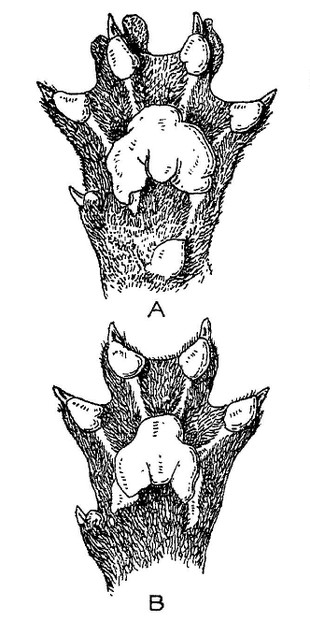
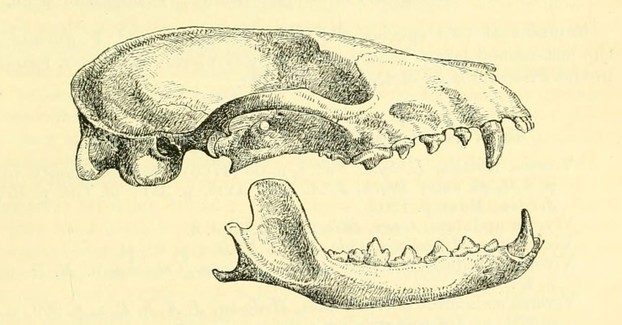
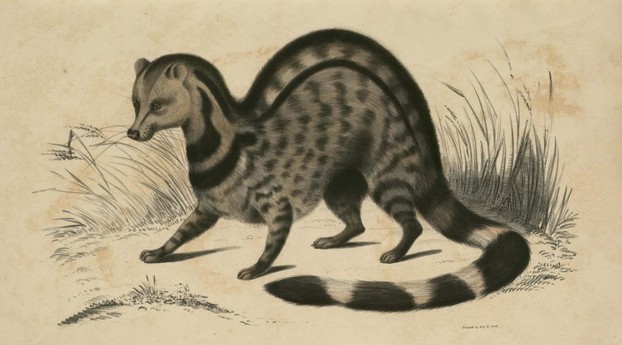
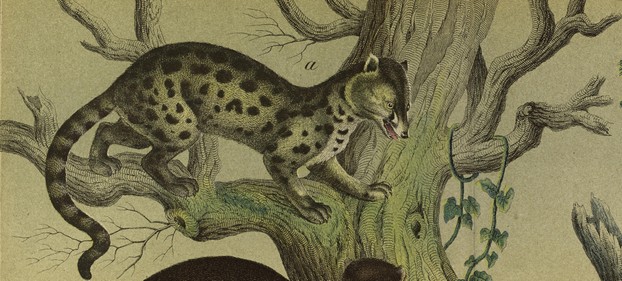
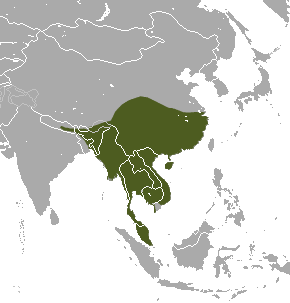
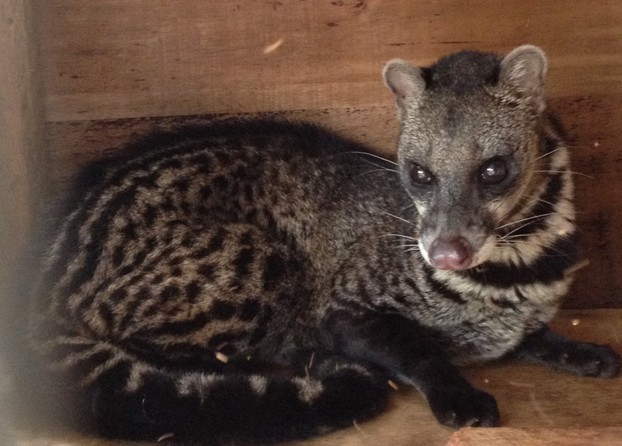
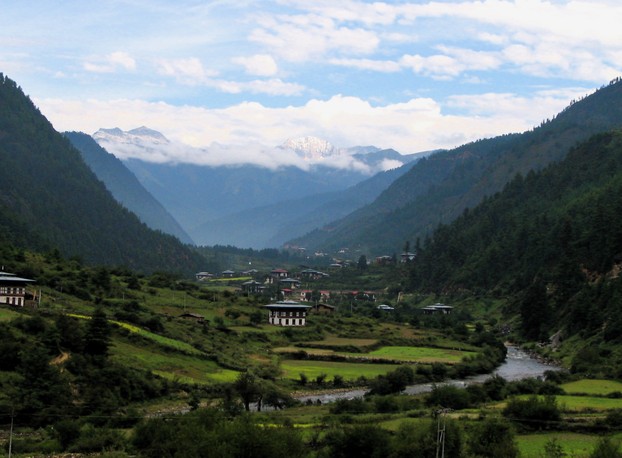
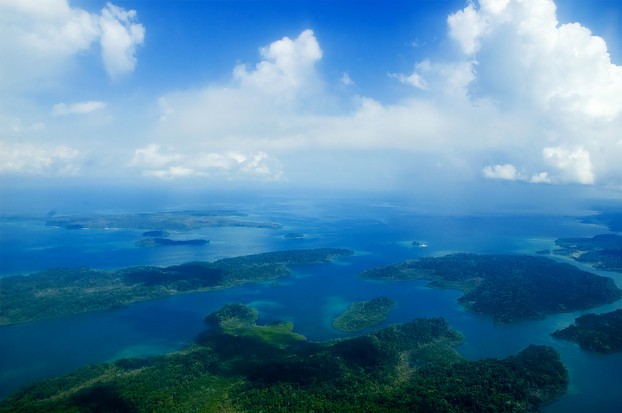
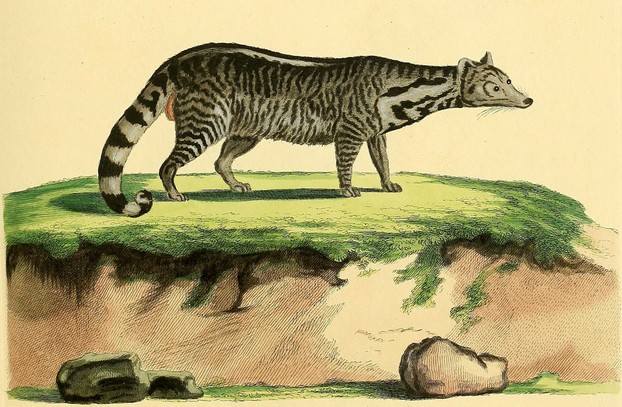






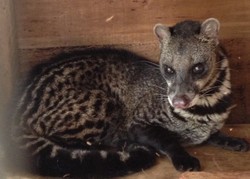

 Are Hawaiian Huakai Po Nightmarchers Avenging Halloween Thursday?on 10/02/2024
Are Hawaiian Huakai Po Nightmarchers Avenging Halloween Thursday?on 10/02/2024
 Mailing Addresses for 2023 Form 4868 Extending 1040 and 1040SR April 15, 2024, Due Dateon 04/15/2024
Mailing Addresses for 2023 Form 4868 Extending 1040 and 1040SR April 15, 2024, Due Dateon 04/15/2024
 Mailing Addresses for 2023 Forms 1040 and 1040SR Filed in 2024on 04/15/2024
Mailing Addresses for 2023 Forms 1040 and 1040SR Filed in 2024on 04/15/2024
 Mailing Addresses for 2022 Form 4868 Extending 1040 and 1040SR April 18, 2023, Due Dateon 04/13/2023
Mailing Addresses for 2022 Form 4868 Extending 1040 and 1040SR April 18, 2023, Due Dateon 04/13/2023

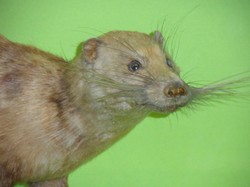
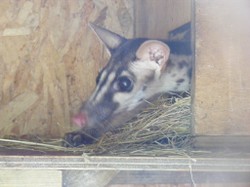
Comments